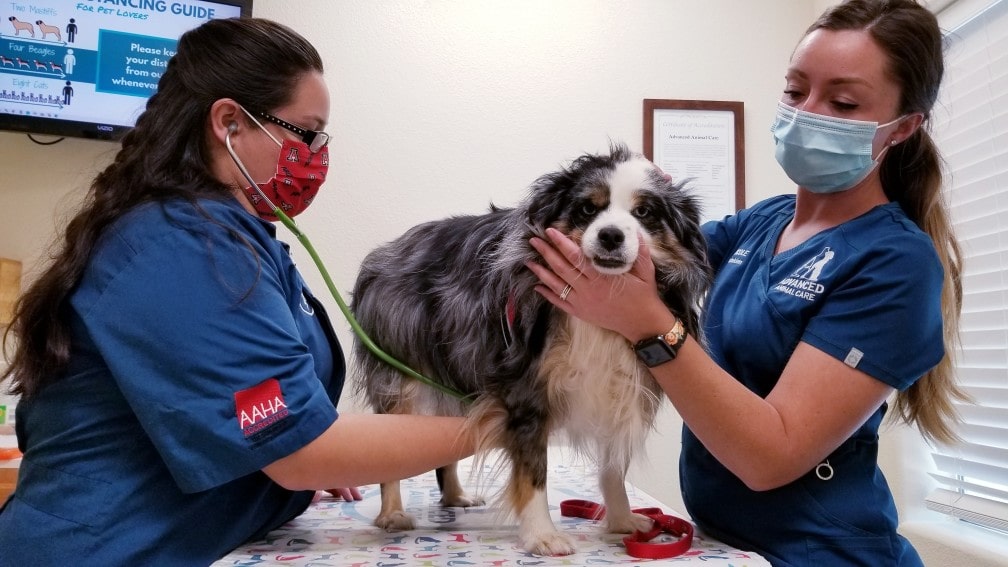Your quadruped friend may experience disorders, physical difficulty, trauma, and joint diseases that restrict or completely stop their walking ability. The condition when the dog struggles to walk, stand up, be active, and be brisk is a concerning condition. This condition may or may not have chronic pain; it is a case of mobility loss.
Sometimes the pain leads to total numbness of the limbs where the animal losses sensation. With simple observation and care, you can identify the symptoms of mobility loss. Here are the signs to look for:
- Bruising
- Issues with bowel–bladder control or constipation
- Loss of appetite
- Skin lesions due to struggling to move
- Stiff joints and trembling while standing
- Urine scald
- Skin ulcers
When you find any symptoms, you must look for an answer to sudden mobility loss: helping a dog who can’t walk. There are several types of mobility loss. Some may lead to complete paralysis of the body, or some may only affect the hind limbs.
Check with the vet to ascertain if it is a degenerative condition or something that can improve over time. Sadly, most of the immobility cases are deteriorating.
It can result in permanent loss of mobility. The permanent loss happens due to any infection. It can result due to inflammation of the nervous system.
Signs of mobility problems in senior dogs
When your dog loses mobility, the possible reasons are many – Injury or trauma, CDRM, Arthritis, and Diabetes are a few to mention. Your dog needs regular check-ups with the vet after reaching a certain age.
Elder dogs require more care and health assessment every few months to ascertain they do not get any new ailments and degradations. You can bring simple lifestyle changes to improve the struggling routine of your four-legged friend. Let’s have an in-depth understanding:
CDRM (Chronic Degenerative Radiculomyelopathy):
When the spinal cord deteriorates and starts to weaken the fibers that help transmit signals to the brain from the legs, it is a condition of CDRM. Generally, older dogs suffer from this ailment, which starts showing on the hind legs.
Your dog may find it hard to balance, stand up, and lose control. Discuss with your vet about this, as with rehabilitation and proper medications, the condition can improve.
Injury/Trauma:
When your dog recovers from any injury or surgery, it may result in temporary immobility. Sudden trauma to the spine or back results in mobility loss. Slip discs, rupture of joints, fractures, inflammation, bruising, and weakness in the back legs are common reasons for the struggle in movement in dogs. Immediately seek medical care, as you can always treat the damage with medications and rehabilitation.
Cushing disease:
The dog’s body produces more cortisol in the adrenal glands, which leads to Cushing’s disease. Although this is an elder dog deteriorating condition sometimes, even younger dogs encounter it.
When the hind legs perform poorly with hair loss, bloated belly, and increased appetite, it indicates Cushing’s disease. Check with the vet immediately and start the treatment before it causes irreversible damage.
Diabetes:
Diabetes may result in many organ failures in dogs – the hind legs are one part. However, diabetes is more common in female dogs than male dogs, and getting a bi-annual check-up from the vet is better.
If you observe sudden weight gain in your pet with food cravings, then get the sugar levels checked. The primary curb strategy is cutting the extra sugars while boosting the protein diet. Also, increasing the activity time for the pets is beneficial. Check on the weight of your fur friend.
Read Also: How To Treat Mobility Issues In Senior Dogs?
Arthritis:
When your dog struggles to walk, use the staircase and drags to move, then examine the bone condition. You can conduct a straightforward x-ray to get a confirmation of joint damage.
On the confirmation after the diagnosis, you can start with muscle and joint strengthening exercises, anti-inflammatory drugs, health supplements, painkillers, and oil massage.
Cancer/tumor:
Any cancerous growth or a malign tumor can result in mobility loss. It depends on the body part, and the damage is gradual. Cancer treatment only is the solution to this condition.
Mobility loss and the damage control
When you have tried everything from drugs to therapeutic options but failed to bring back the agility in dogs, you can switch to solutions like braces, wheelchairs, and harnesses. Hydrotherapy is one exceptionally effective way of helping dogs to stay active.
Whether your dog is at the diagnosis stage, taking treatment, or has lost mobility – swimming and water activities are the best.
You can try customized braces for your pet that help in supporting the movement. Try a mix of physical therapies like an exercise ball, foot stimulation, walks, and indoor activities to rejuvenate the muscles and strengthen the bones. Continue with a nutritious diet, healthy supplements, and anti-inflammatory drugs. It will work both internally and externally.
Conclusion
The primary method offers complete rest and a relaxing routine for your pet. You can shift the resting space from the upper floor to the ground floor and reduce the activity. Create a cozy and warm crate for your pet to sleep in, and you can carry it in case they struggle a lot to move.
Avoid letting them use the steps and restrict their movement to indoor activities.

 DogExpress
DogExpress



















 in Chandigarh, India.
in Chandigarh, India. 
